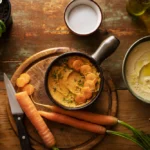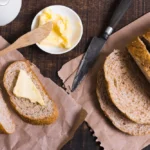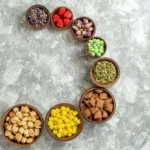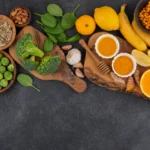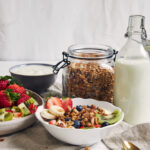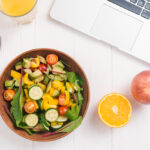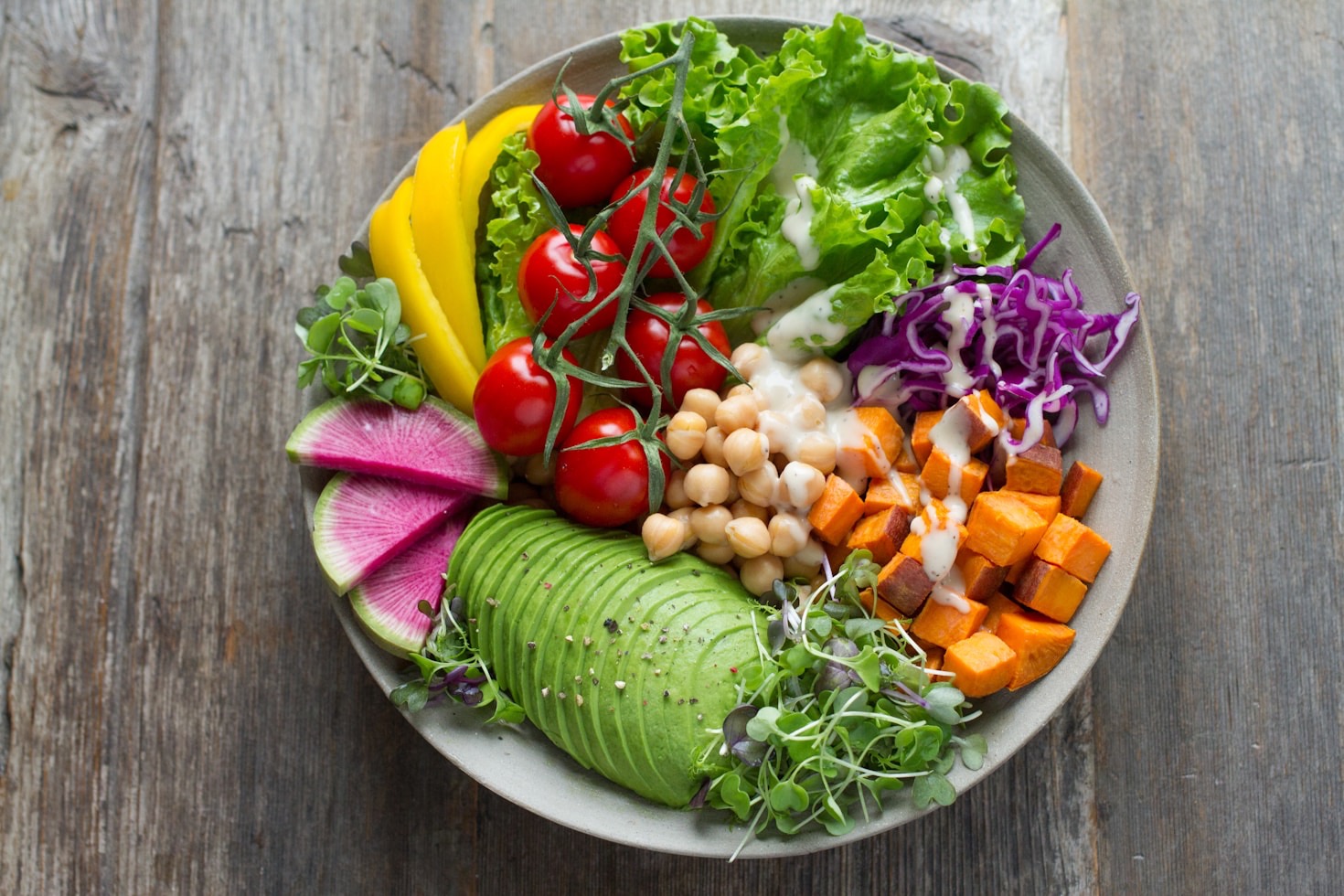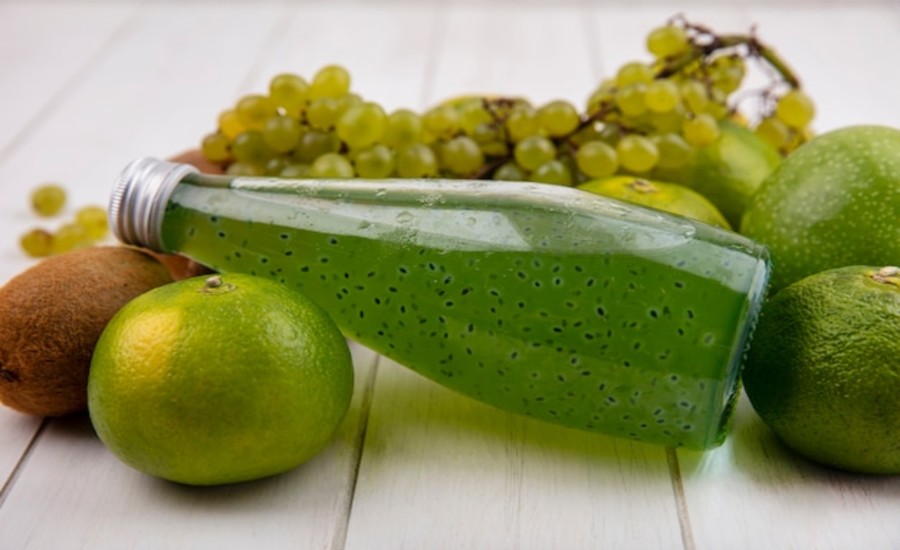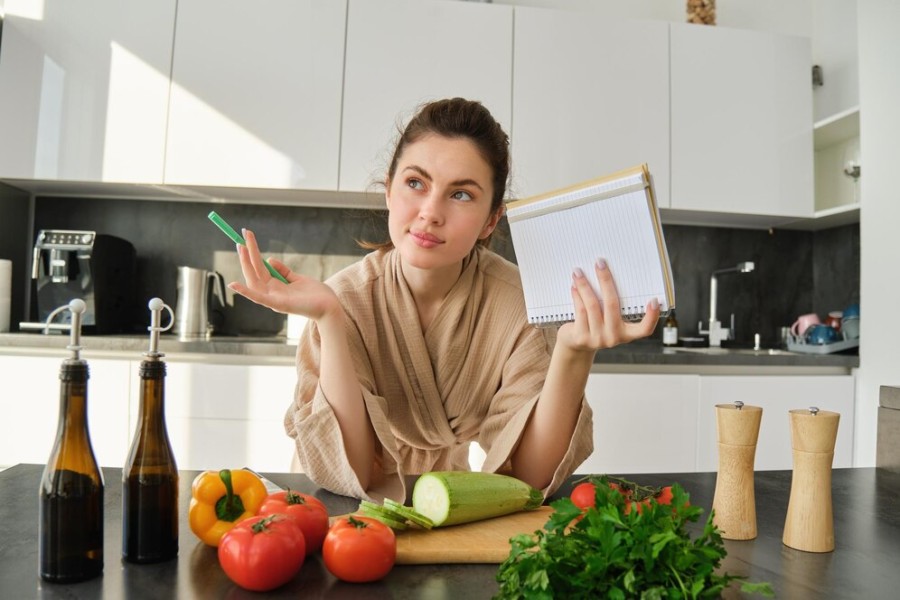Iron: a vital mineral essential for energy, focus, and life itself. Yet, for those embracing a plant-based lifestyle, ensuring adequate iron intake often appears as a daunting nutritional crossroads, fraught with concerns about deficiency and anemia. Can vegans truly thrive without animal-derived iron? Absolutely! This guide provides a 360° plan, grounded in science and tailored for the Indian context, to help you become “Ironclad Vegan” We’ll explore Nutritional Science to understand plant iron, tap into Ethical and Environmental perspectives, share Practical strategies for maximizing absorption, and connect with Cultural wisdom (and challenges) surrounding iron in India. Forget the anemia worries – let’s unlock the secrets to robust iron levels on a plant-based diet.
Unlocking the Power of Plant-Based Vegan Iron
LENS 1: Nutritional Science – Understanding Vegan Iron & Absorption
- Key Findings: Plant-based diets exclusively contain non-heme iron, which has lower bioavailability than heme iron from animal sources. However, absorption can be significantly influenced by dietary factors – dramatically enhanced by Vitamin C and hindered by compounds like phytates and tannins. Understanding these factors is key to ensuring adequacy. While iron deficiency anemia is a significant public health issue in India across all diets, well-planned vegan diets can absolutely meet iron needs.
- Detailed Analysis:
- Heme vs. Non-Heme Iron: Animal tissues contain heme iron (bound within hemoglobin/myoglobin), which is readily absorbed. Plants contain non-heme iron, whose absorption is more variable (ranging from 2-20%) and heavily dependent on other components of the meal. Vegan diets supply 100% non-heme iron.
- Recommended Dietary Allowances (RDAs): Due to lower bioavailability, general guidelines often suggest vegans aim for 1.8 times the iron RDA of non-vegans (though individual needs vary and the body can adapt absorption over time). For instance, if the RDA is 8mg for adult men, a vegan might aim for ~14mg; if 18mg for menstruating women, aim for ~32mg. (Consult healthcare professionals for personalized needs).
- The Power of Enhancers:
- Vitamin C (Ascorbic Acid): This is the superhero of non-heme iron absorption. Consuming Vitamin C-rich foods at the same time as iron-rich foods can increase absorption severalfold. Vitamin C forms a soluble chelate with iron, keeping it available for absorption in the gut. Excellent sources include citrus fruits (lemon, orange, lime), amla (Indian gooseberry), tomatoes, bell peppers (capsicum), broccoli, strawberries, and guava.
- Other Organic Acids: Citric, malic, and lactic acids (found in fruits, vegetables, and fermented foods like dosa/idli batter) also enhance absorption.
- Beta-Carotene: Found in yellow/orange fruits and vegetables (carrots, sweet potatoes, pumpkin, mangoes), beta-carotene also shows iron-enhancing effects.
- Understanding the Inhibitors:
- Phytates (Phytic Acid): Found in whole grains (wheat, bajra, jowar), legumes (dals, beans), nuts, and seeds. Phytates bind to iron, reducing absorption. However, their effect can be significantly reduced by common food preparation techniques.
- Polyphenols (including Tannins): Abundant in tea (chai), coffee, cocoa, and some spices and berries. These strongly inhibit iron absorption.
- Calcium: High amounts of calcium, especially from supplements taken with meals, can interfere with iron absorption. Spacing calcium intake away from iron-rich meals is advisable if deficiency is a concern.
- Oxalates: Found in high levels in spinach (palak), rhubarb, beet greens. They bind iron, making it less available from these specific foods. While spinach contains iron, it shouldn’t be relied upon as the sole or primary source due to poor absorption from it.
- Iron Deficiency Anemia (IDA): Characterized by low hemoglobin, leading to fatigue, weakness, shortness of breath, poor concentration, pale skin, headaches, and dizziness. IDA is widespread in India (affecting ~59% adolescent girls, ~67% young children per NFHS-5 estimates, though prevalence varies). It’s crucial to note this affects all dietary groups, often linked to overall diet quality, inhibitors, and specific needs (menstruation, pregnancy), not just veganism.
- Nutritional Deep Dive 1: Maximizing Absorption: The Power of Vitamin C & Timing
- The key is co-consumption. Squeezing lemon (nimbu) or adding tomatoes to your dal, having amla chutney with roti and sabzi, eating fruit after an iron-rich meal, or adding capsicum to a bean salad – these simple pairings dramatically boost how much non-heme iron your body absorbs from the meal. Conversely, drinking chai or coffee with your iron-rich lunch or dinner significantly hinders absorption due to tannins. Aim to have tea/coffee at least an hour before or after iron-focused meals.
- Nutritional Deep Dive 2: Taming the Inhibitors: Soaking, Sprouting, Fermenting & Meal Timing
- Traditional Indian food preparation methods often naturally reduce phytates!
- Soaking: Soaking dals, beans, and whole grains overnight (and discarding the water) activates phytase enzymes that break down phytates.
- Sprouting (Germination): Sprouting legumes (like moong) or grains further degrades phytates.
- Fermentation: Traditional fermentation processes (like for idli and dosa batter) use microorganisms that break down phytates, enhancing mineral bioavailability.
- Timing Calcium: If taking calcium supplements, take them between meals rather than with your main iron sources.
- Traditional Indian food preparation methods often naturally reduce phytates!
- Voice of Experience (Indian Dietitian specializing in Plant-Based Nutrition): “Anemia is a major concern in India, but it’s absolutely manageable on a vegan diet with the right knowledge. We focus on maximizing non-heme absorption. Simple additions like lemon juice to dal, amla pickle with meals, or ensuring a side salad with tomatoes makes a huge difference. We also advise separating chai/coffee from main meals and utilizing traditional methods like soaking legumes.” – Dr. Sunita Sharma, Clinical Dietitian.
- Critical Reassessment: While diverse plant foods offer iron, relying solely on high-oxalate greens like spinach or not paying attention to enhancers/inhibitors can lead to suboptimal intake, especially for women and children with higher needs. Regular monitoring via blood tests is advisable for those at risk, regardless of diet.
LENS 2: Ethical Framework – The Heme-Free Advantage?
- Analysis: Opting for plant-based iron sources directly aligns with the core vegan ethic of avoiding animal products and associated harm. Interestingly, while non-heme iron requires more strategic consumption, emerging research suggests potential long-term health risks associated with high intakes of easily absorbed heme iron (found only in meat), including increased oxidative stress and potential links to certain chronic diseases. Therefore, relying solely on non-heme iron, while requiring mindful eating, might offer a subtle long-term health advantage alongside the clear ethical one.
LENS 3: Environmental Science – Sustainable Iron Sources
- Analysis: The staples of an iron-rich vegan diet – lentils, beans, whole grains, leafy greens, seeds – generally boast significantly lower environmental footprints (carbon, water, land use) compared to red meat, a primary source of heme iron in many non-vegetarian diets. Choosing sustainable, plant-based iron sources contributes positively to both personal health and planetary well-being.
LENS 4: Everyday Practitioner’s Experience – Building Ironclad Habits
- Analysis: Living an “Ironclad Vegan” life involves integrating knowledge into daily habits. This means consciously pairing foods, timing beverages, and utilizing preparation methods that maximize absorption.
- Practical Strategies:
- Pairing Power: Always include a Vitamin C source with iron-rich meals (Dal + Nimbu/Tomato; Bean Sabzi + Capsicum; Fortified Atta Roti + Amla Chutney; Spinach Khichdi + side of Orange slices).
- Preparation Perks: Soak dals and beans overnight; consider sprouting moong or other legumes; enjoy fermented foods like idli/dosa.
- Beverage Timing: Drink chai/coffee between meals, not alongside them.
- Cookware Choice: Using cast iron cookware (like a traditional kadai or skillet) can leach small but potentially significant amounts of non-heme iron into food, especially acidic dishes like tomato-based curries. Research shows this can contribute to iron intake.
- Know Your Sources: Regularly include lentils, chickpeas, rajma, tofu, leafy greens (rotate beyond just spinach – e.g., methi, moringa), pumpkin seeds, sesame seeds (til), bajra, ragi. Check labels for iron-fortified foods (atta, salt, cereals).
- Daily Impact: Maintaining adequate iron levels translates directly to feeling energetic, focused, and capable throughout the day. It prevents the debilitating fatigue and weakness associated with anemia, improving overall quality of life.
- Practical Strategies:
- Voice of Experience (Indian Vegan): “When I first went vegan, I worried about iron. But my nutritionist taught me the tricks! Now, squeezing lemon on my dal is automatic. I soak my rajma without fail. I have chai an hour after lunch, not with it. I also cook my sabzis in a cast iron kadai sometimes. My energy levels are great, and my last blood test showed healthy iron!” – Rohan Mehta, Vadodara resident.

LENS 5: Cultural Observer’s Perspective – Iron Wisdom & Challenges in India
- Analysis: Indian cuisine is inherently rich in plant-based iron sources used for millennia. Traditional practices often intuitively support absorption, while modern habits sometimes hinder it. The widespread prevalence of anemia underscores systemic nutritional challenges beyond dietary choices alone.
- Traditional Strengths: Dishes centered on lentils (dal), chickpeas (chana), kidney beans (rajma), spinach (palak), mustard greens (sarson ka saag), fenugreek greens (methi), amaranth greens (chaulai), millets (bajra, ragi), sesame seeds (til laddoos), and jaggery (gur) are traditional iron providers. The common practice of adding lemon/lime (nimbu), tamarind (imli), or tomatoes to dishes provides Vitamin C. Fermentation for idli/dosa helps reduce phytates.
- Modern Inhibitors: The habit of drinking chai frequently, often with meals, is a major cultural inhibitor of iron absorption due to tannins. Over-reliance on polished rice or refined wheat flour reduces iron/fiber intake compared to whole grains/millets.
- Anemia Context: High rates of IDA in India, especially among women and children, highlight issues like overall dietary quality, access to diverse foods, sanitation, parasitic infections, and awareness, not just specific diets. Veganism isn’t the primary driver of India’s anemia burden.
- Fortification Efforts: Government initiatives promoting iron-fortified salt, atta (flour), and rice, along with supplementation programs (like Anemia Mukt Bharat), play a role in addressing deficiency at a population level. Awareness and access to these fortified staples can benefit vegans.
- Market Transformation: Increased availability of iron-fortified packaged foods in Indian supermarkets and growing awareness campaigns about anemia.

PERSPECTIVE INTERSECTION MATRIX
- Nutrition & Practice: Scientific understanding of enhancers/inhibitors (Lens 1) directly informs practical meal planning and preparation strategies (Lens 4).
- Culture & Practice: Traditional Indian recipes and methods (Lens 5) provide a rich base of iron sources and beneficial techniques (soaking/fermenting), but also present challenges (chai timing) that need practical adaptation (Lens 4).
- Nutrition & Culture: High anemia rates in India (Lens 5 context) underscore the importance of applying nutritional science (Lens 1) effectively across all dietary patterns.
- Ethics & Science: The ethical choice to avoid heme iron (Lens 2) necessitates mastering the science of non-heme iron absorption (Lens 1).
MISCONCEPTION ANALYSIS (About Vegan Iron)
| Misconception | Reality (Drawing from Lenses – India 2025 Context) |
| “Vegans are bound to become anemic.” | FALSE. Anemia is common in India across diets. Well-planned vegan diets incorporating absorption strategies can provide adequate iron. Vigilance needed for at-risk groups. (Lens 1, Lens 5) |
| “Plant iron (non-heme) is poorly absorbed and thus ineffective.” | FALSE. While baseline absorption is lower, it’s highly adaptable and can be significantly boosted (esp. by Vit C). The body can increase absorption when stores are low. (Lens 1, Lens 4) |
| “You must eat red meat to get enough iron.” | FALSE. Legumes, fortified foods, seeds, and certain greens offer substantial iron. Focus is on absorption strategy, not just source type. (Lens 1, Lens 5) |
| “Spinach (Palak) is the ultimate vegan iron source.” | MISLEADING. While it contains iron, high oxalate content hinders absorption. Relying solely on spinach is unwise; dietary diversity is crucial. (Lens 1) |
| “Iron deficiency is only a ‘vegan problem’.” | FALSE. It’s a major public health issue in India affecting millions regardless of diet, linked to various factors including bioavailability and overall nutrition. (Lens 5, Lens 1) |
KEY TURNING POINTS (Understanding Iron Nutrition)
- Distinguishing Heme vs. Non-Heme Iron: Understanding their different absorption mechanisms.
- Identifying Vitamin C’s Enhancing Role: Recognizing the power of co-consumption.
- Understanding Phytates & Inhibitors: Identifying factors that hinder absorption and developing mitigation strategies (soaking, sprouting, fermentation).
- Population Studies on Vegetarians/Vegans: Demonstrating that well-planned plant-based diets do not inherently lead to higher rates of IDA compared to general populations.
- Focus on Bioavailability: Shifting emphasis from just iron content to absorbable iron.
- Recognition of India’s Anemia Burden: Highlighting the need for iron awareness across all dietary patterns in the country.
CONVERGENT REFLECTIONS: Empowered and Ironclad
Concerns about iron sufficiency on a vegan diet are valid but entirely surmountable with informed planning. For vegans in India, the journey involves understanding the nuances of non-heme iron absorption, leveraging the abundance of iron-rich plant foods within Indian cuisine, consciously employing strategies like Vitamin C pairing and inhibitor management (including adapting cultural habits like chai timing), and utilizing traditional preparation methods like soaking and fermentation. It’s not about deficiency being inevitable, but about proactive, smart eating. By embracing these principles, vegans can confidently maintain robust iron levels, contribute to their overall health and vitality, and truly embody the “Ironclad Vegan,” free from anemia worries.
FURTHER AREAS OF EXPLORATION
- Guide to Iron Supplementation for Vegans in India (When needed, types, dosage – consult a doctor).
- Optimizing Iron Intake During Vegan Pregnancy and Lactation in India.
- Iron Needs for Vegan Children and Adolescents in India.
- Detailed Comparison of Iron Content & Bioavailability in Different Indian Dals and Millets.
- Recipes: Iron-Rich Vegan Indian Meals with Optimal Enhancer Pairings.
- The Connection Between Gut Health and Iron Absorption.
- Addressing Iron Overload Disorders (Hemochromatosis) on a Plant-Based Diet.

